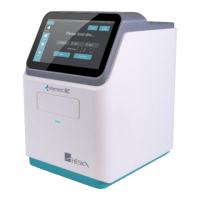__________________________________________________________________________
Vers. 20210510ENG Page 20
SECTION 5: TESTING AND RESULTS
5.1 Sample Requirements
Always follow biohazard procedures in accordance with the sample handling rules of your
facility when handling samples (blood).
5.1.1 Sample handing
1. Collect whole blood sample using 22 g (or larger) needle.
2. Gently invert tube several times to ensure proper mixing of sample with lithium heparin.
❖ Whole blood must be analyzed or transformed to plasma and serum within 30 minutes
after collection.
❖ Do not freeze or shake the sample vigorously, this can hemolyze the sample.
❖ If the sample cannot be analyzed immediately after collection, it should be processed
into serum or plasma and stored in sealed sample tube at -20°C. Avoid repeated
freezing-thawing cycles.
❖ The patient should be fasted for 12 hours prior to glucose testing.
❖ Check the patient sample for clots or hemolysis. Avoid running icteric or lipemic
samples. The analyzer has a built-in centrifugal function - testing will begin after the
anticoagulated whole blood has been spun into plasma. Lithium heparin is the only
recommended anticoagulant, as it will not interfere with on biochemistry analysis.
❖ Always wear proper protective gear when handling patient samples.
5.2 Test Rotor Preparation
Test rotors are single use only. The rotors contain diluent at the center and separate tunnels
leading to cuvettes with individual testing reagents to avoid cross contamination.

